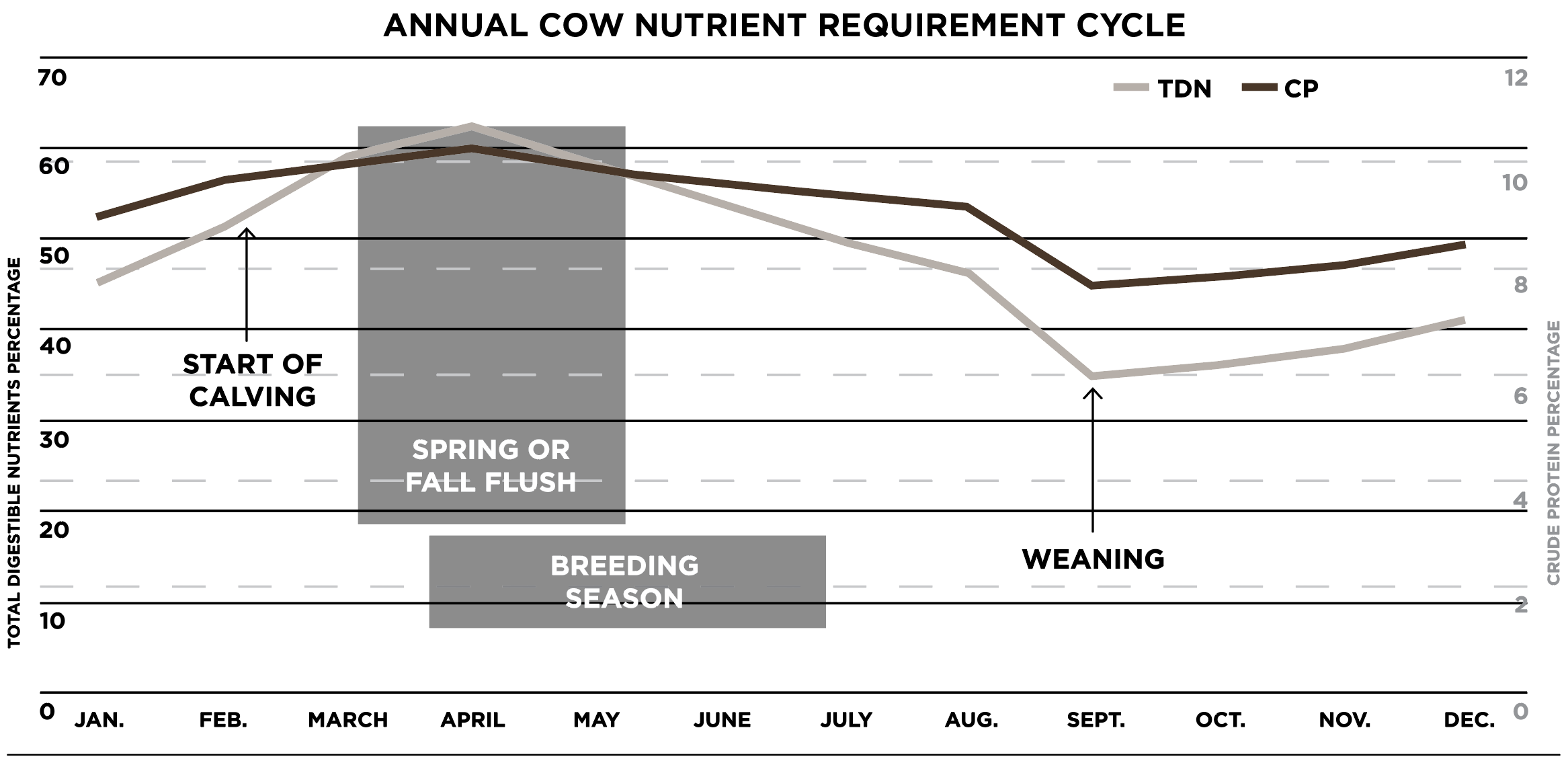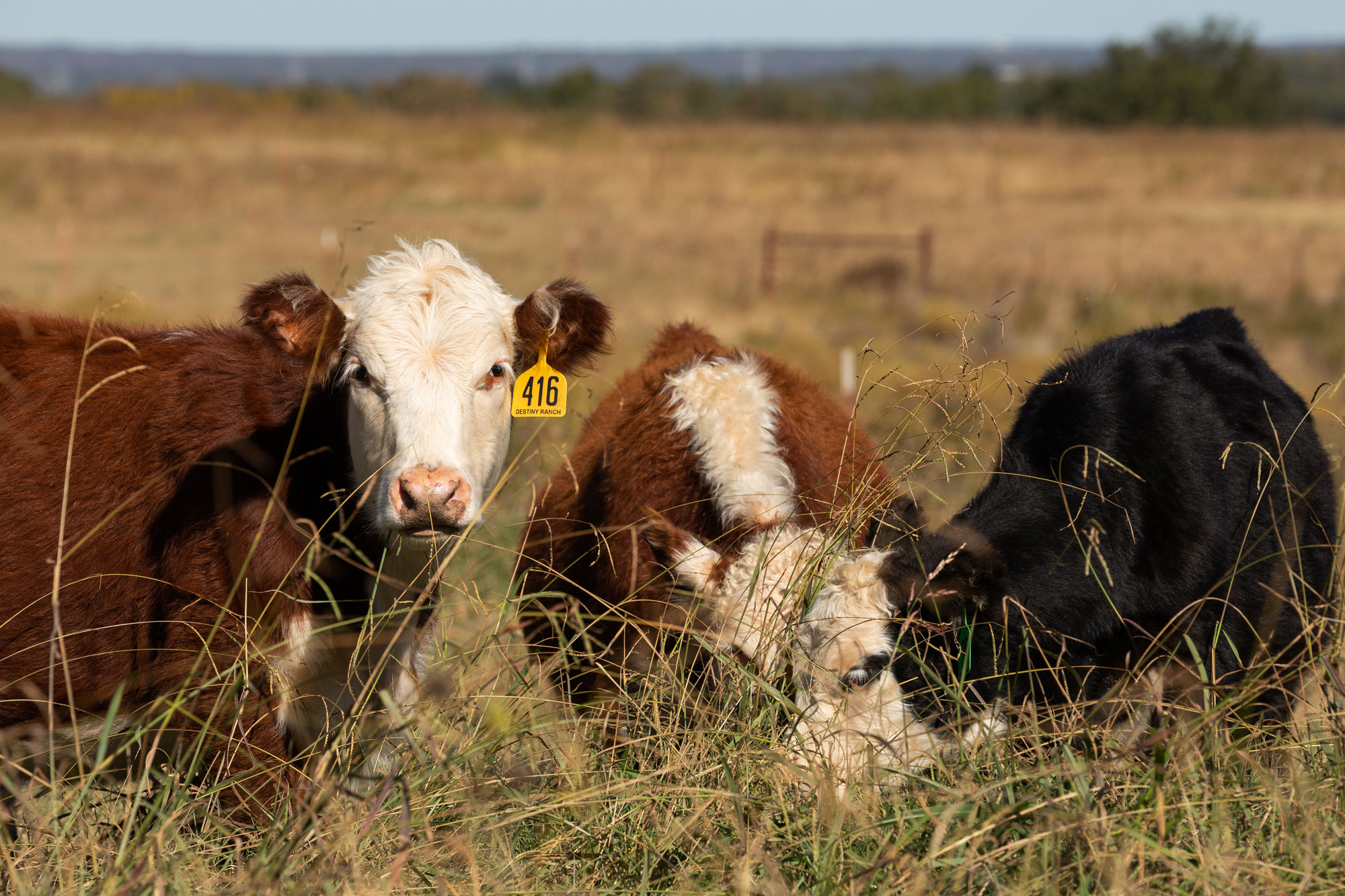
Agricultural News
Robert Wells, Livestock Consultant says Don't Let Your Cows Eat the Profit
Mon, 06 Apr 2020 12:00:47 CDT
 Robert Wells, Ph.D. and Livestock Consultant has written the following article for the Noble Research Institute, News and Views about not letting your cows eat the profits.
Robert Wells, Ph.D. and Livestock Consultant has written the following article for the Noble Research Institute, News and Views about not letting your cows eat the profits.
Intentional beef producers will develop a winter feeding strategy and calving season that reduces the cost of winter feed. The bulk of the cost of cow ownership typically occurs during the winter when additional supplementation is required. University and industry data indicate that annual cow costs range from $500 to $600. Nutritional supplementation makes up 40-60% of this total annual cost; thus, ranging from $200 to $360 per cow per year. Mineral supplementation makes up about $35 of the total nutritional costs. The remainder, $165-325 on average, is spent on supplemental feed and hay. What can be done to reduce the cost of the herd supplementation program without negatively impacting cow body condition score and reproduction?
The most impactful element that should be considered is to time the cow's peak lactation with when the best quality and quantity forage is available. This time is when she has the highest nutritional demand. Refer to the graph to understand the relationship of timing of calving relative to the cow's highest nutritional demand. Peak lactation occurs about two to three months after birth.
IMPACTS ON BODY CONDITION SCORE
Many producers think the best time to start calving is when the spring or winter flush of forage is at its peak. However if they do this, then by the time peak lactation occurs, the cow may have missed the best forage of the year and will not be able to take full advantage of it. This will impact the cow through her body condition score (BCS) since there is a possibility that she will be on a negative plane of nutrition and losing weight. The first thing that the cow will lose is fat and her BCS will be reduced.
Secondly, by starting the calving season about two months in advance of the height of the forage quality and quantity, this will ensure that the majority of the cows will calve at the most opportune time relative to forage quality. In a 60-day calving season, at least half of the cows should be in peak lactation when the annual flush of forage arrives.
IMPACTS ON REPRODUCTION
Since the cow will be consuming extremely high quality forage that exceeds 60% total digestible nutrients (TDN) and 10% crude protein (CP), she will be rebuilding any body fat reserves. This will signal to the body that the cow is in a favorable environment and can support the next pregnancy. Thus, she will start to cycle again in a timely manner after calving. Cow nutrition and subsequent body condition score has been demonstrated numerous times to have an impact on her rebreeding rate. A cow that is in a BCS of five or greater will have a much greater probability of timely rebreeding compared to one that is in a BCS of four or less. In this regard, what occurs this year can have a significant impact on profitability next year.
For young a cow that is trying to breed for her second calf, the impact of nutrition can be the difference between her getting rebred or not. These females have a much higher nutritional demand than do mature cows. Two-year-old cows are still growing, lactating and trying to support the next reproductive cycle in that order, respectively. Reproduction is the first physiological process the cow will shut down if she is nutritionally compromised. Most of the time, lack of proper nutrition is to blame when a cow fails to get rebred for the second calf.
Cows that fail to rebreed or breed late will "eat away" at the profit of the entire ranch. A cow that calves just 30 days later than the previous year has given up at least 60 pounds of additional weaning weight, which can translate into about $75 of lost value. A cow that doesn't breed at all has incurred all the annual costs of production yet did not repay the owner with a live calf at birth. In this sense, she is eating away at the ranch profit margin.

WebReadyTM Powered by WireReady® NSI
Top Agricultural News
More Headlines...



















